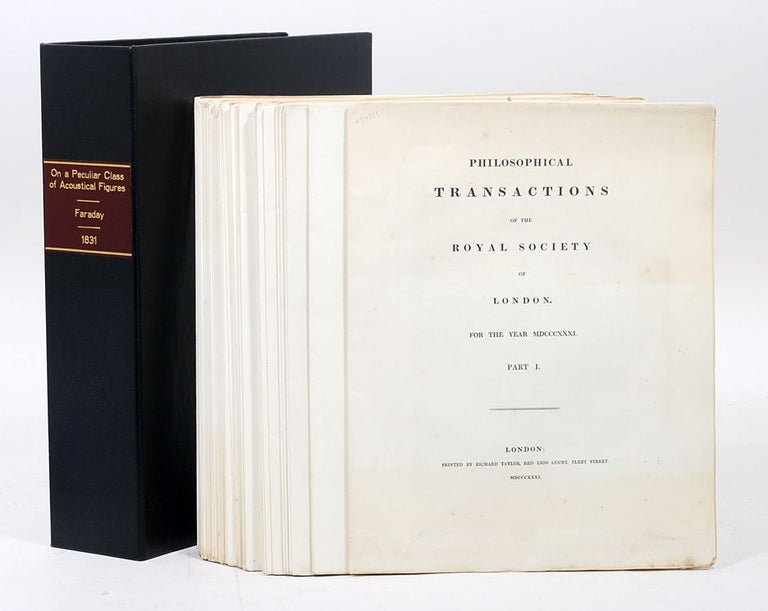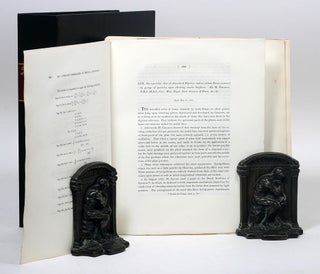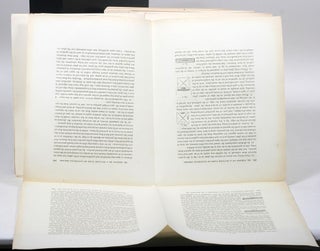On a Peculiar Class of Acoustical Figures; and on certain Forms assumed by groups of particles upon vibrating elastic Surfaces
FIRST PRINTING IN EXCEEDINGLY RARE ORIGINAL SHEETS of one of Faraday’s most important papers: his experiments with sound vibrations that facilitated his revolutionary discovery of the production of electricity by electromagnetic induction.
“In the spring of 1831 Faraday began to work with Charles (later Sir Charles) Wheatstone on the theory of sound, another vibrational phenomenon. He was particularly fascinated by the patterns (known as Chladni figures) formed in light powder spread on iron plates when these plates were thrown into vibration by a violin bow. Here was demonstrated the ability of a dynamic cause to create a static effect, something he was convinced happened in a current-carrying wire. He was even more impressed by the fact that such patterns could be induced in one plate by bowing another nearby. Such acoustic induction is apparently what lay behind his most famous experiment” (Britannica).
“Faraday was a music lover and, between 1828 and 1830, had delivered a series of Friday Evening Discourses on the physics of sound and musical instruments. Again, a wave phenomenon, this time in the form of airborne vibrations. To enhance the lectures, Charles Wheatstone introduced Faraday to Chaldni figures: symmetric, stationary patterns created when a plate of sand or powder is rapidly vibrated. (The vibration was accomplished with a violin bow.) Faraday may have been particularly intrigued by the demonstration that a vibrating plate induces a similar pattern on an adjacent plate, the vibratory power having passed like sound waves through the air. Perhaps he recognized that he has witnessed the audio analog of what he sought to do with electricity: to make one current induce another through some invisible linkage through space. In any event, Faraday became so enamored of the acoustical figures that he conducted an intensive investigation of the phenomenon, working this time with water, egg white, and various oils. During the six months just prior to his induction experiment, he was steeped in the transmission of vibrations and waves, suggesting connections between those he could see or hear and the invisible variety that might arise in the electromagnetic realm: ‘I am inclined to compare the diffusion of magnetic forces from a magnetic pole, to the vibrations upon the surface of disturbed water, or those of air in the phenomena of sound...’” (Hirshfeld, The Electric Life of Michael Faraday).
NOTE: This copy is in the extremely rare original state. It has never been bound and exists in the original eight-page large folded sheets, just as they would have come off the printer in 1831.
IN: Philosophical Transactions of the Royal Society, Vol. 121 for the Year 1831 (Parts I and II), pp. 299-340. The entire Vol. 121 offered, 510 pages. London: Richard Taylor for The Royal Society, 1831. Quarto, original sheets (never bound); custom box. Occasional hints of browning to page edges, foxing to a few plates (not part of Faraday paper). A FINE SET: A REMARKABLE SURVIVAL IN THE ORIGINAL STATE.
Price: $4,500 .




